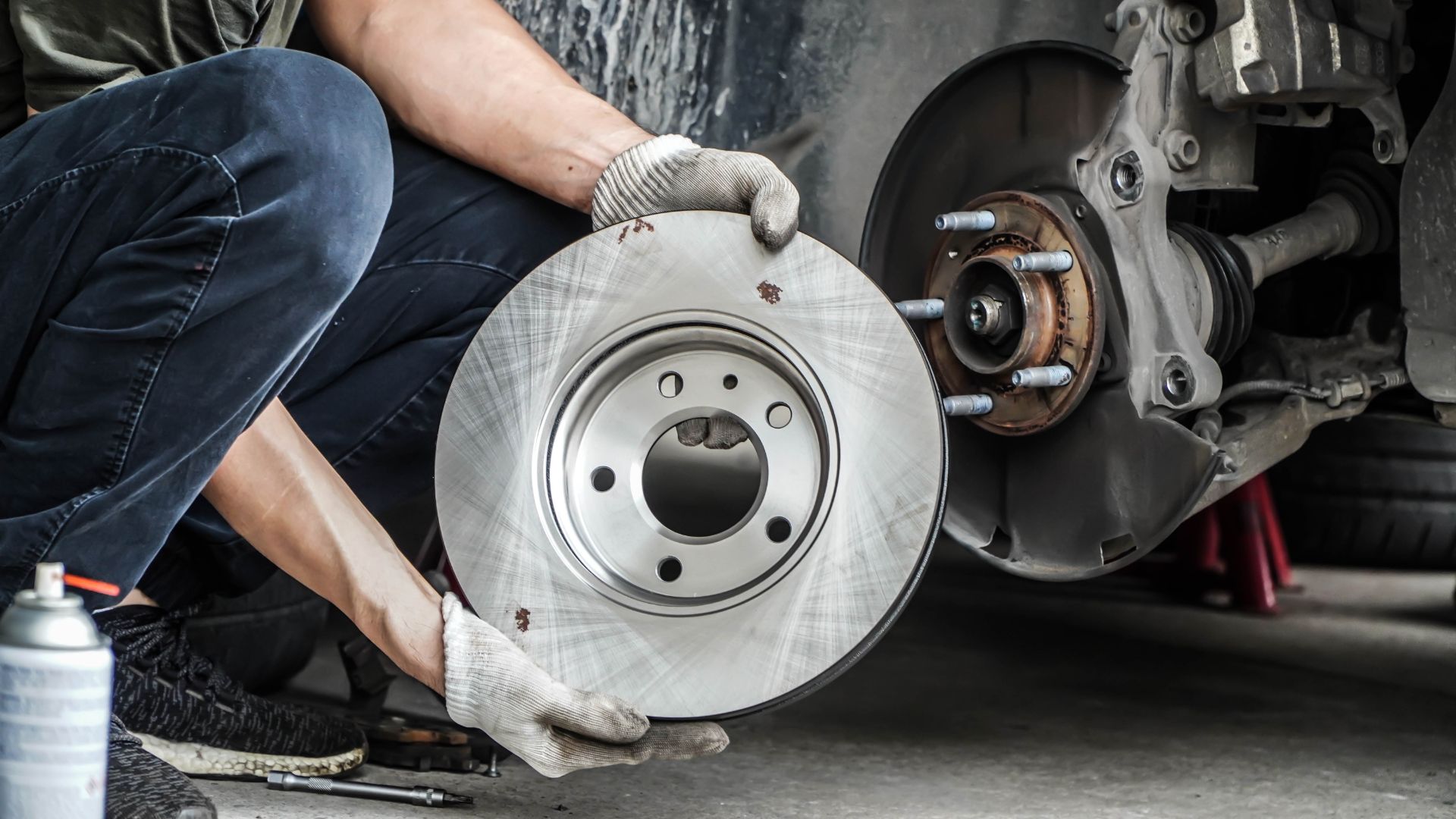Disc brakes definition and meaning

Disc brakes are a type of braking system that uses calipers to press brake pads against a spinning disc, or rotor, to create friction and slow the vehicle. Disc brakes are found on all modern vehicles and are more effective than older drum brakes.
There are two main types of disc brakes: mechanical and hydraulic. Mechanical disc brakes use a cable connected to the brake pedal to push the calipers together, while hydraulic disc brakes use fluid pressure from the master cylinder to do the same thing. Most vehicles today have hydraulic disc brakes.
Disc brakes work by using friction to slow down a spinning wheel or rotor. When the brake pedal is pressed, fluid flows from the master cylinder into the calipers. The fluid pressure pushes the calipers together, pressing the brake pads against the disc. The friction between the pads and the disc slows the disc down, and the vehicle’s speed is reduced.
Disc brakes are more effective than drum brakes because they can dissipate heat better. Drum brakes heat up more quickly because they have less surface area to dissipate the heat. This can lead to brake fade, where the brake pads become less effective at slowing the vehicle down. Disc brakes don’t have this problem because they have more surface area to dissipate heat.
Disc brakes are also less likely to lock up than drum brakes. When a vehicle’s tires lock up, it can skid out of control. This is more likely to happen with drum brakes because they rely on friction to work. If the brakes get too hot, the friction can disappear and the brakes will lock up. Disc brakes are less likely to have this problem because they use fluid pressure to push the pads against the disc. The fluid can’t disappear, so the brakes are less likely to lock up.
Disc brakes are the preferred type of brake for most vehicles today. They are more effective than drum brakes and less likely to have problems with heat or locking up.